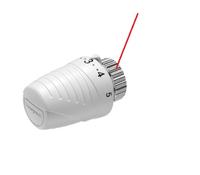Hello,
The described problem is probably trivial, but it doesn`t bother me, please explain it. The radiator in my apartment was replaced with a new one. The radiator is connected from the bottom. Yesterday, I accidentally leaned my body against the thermostatic head and noticed that a little water flowed right next to the thermostatic head and then stopped. I noticed that the nut located next to the thermostatic valve and the radiator (silver) was not fully secured, so I tightened it until it stopped. Then I tilted the head (in the same way as I leaned against it earlier) to check if water was flowing again. The water wasn`t flowing anymore. The question is why this situation occurred and whether it could be a faulty valve? Does tightening the nut solve the problem and I can sleep peacefully? Thank you in advance for the information.
The described problem is probably trivial, but it doesn`t bother me, please explain it. The radiator in my apartment was replaced with a new one. The radiator is connected from the bottom. Yesterday, I accidentally leaned my body against the thermostatic head and noticed that a little water flowed right next to the thermostatic head and then stopped. I noticed that the nut located next to the thermostatic valve and the radiator (silver) was not fully secured, so I tightened it until it stopped. Then I tilted the head (in the same way as I leaned against it earlier) to check if water was flowing again. The water wasn`t flowing anymore. The question is why this situation occurred and whether it could be a faulty valve? Does tightening the nut solve the problem and I can sleep peacefully? Thank you in advance for the information.



